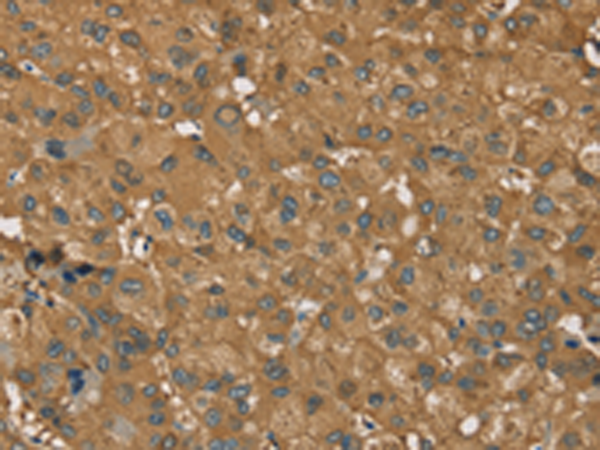


| WB | 咨询技术 | Human,Mouse,Rat |
| IF | 咨询技术 | Human,Mouse,Rat |
| IHC | 1/25-1/100 | Human,Mouse,Rat |
| ICC | 技术咨询 | Human,Mouse,Rat |
| FCM | 咨询技术 | Human,Mouse,Rat |
| Elisa | 1/1000-1/2000 | Human,Mouse,Rat |
| Aliases | RZRB; NR1F2; ROR-BETA; RZR-BETA; bA133M9.1 |
| WB Predicted band size | 53 kDa |
| Host/Isotype | Rabbit IgG |
| Antibody Type | Primary antibody |
| Storage | Store at 4°C short term. Aliquot and store at -20°C long term. Avoid freeze/thaw cycles. |
| Species Reactivity | Human, Mouse, Rat |
| Immunogen | Synthetic peptide of human RORB |
| Formulation | Purified antibody in PBS with 0.05% sodium azide and 50% glycerol. |
+ +
以下是3篇涉及RORB抗体的参考文献及其摘要概括:
---
1. **文献名称**:*RORβ modulates a gene program downstream of Satb2 in developing cerebral cortex*
**作者**:Jabali, S. et al. (2022)
**摘要**:研究利用RORβ抗体通过免疫组化分析小鼠大脑皮层发育中RORβ蛋白的时空表达模式,发现RORβ在Satb2调控的神经元分化通路中起关键作用,影响皮层神经元的树突形态和突触连接。
---
2. **文献名称**:*Antibody-based profiling of circadian clock proteins in the mouse retina*
**作者**:Hasegawa, S. et al. (2020)
**摘要**:通过RORβ抗体进行免疫荧光染色,揭示了小鼠视网膜中RORβ蛋白与生物钟相关分子(如Bmal1)的共定位,证明RORβ在视网膜昼夜节律调控中的潜在功能。
---
3. **文献名称**:*Single-cell transcriptomics reveals RORB as a marker of subtype specification in human dopaminergic neurons*
**作者**:La Manno, G. et al. (2016)
**摘要**:结合单细胞测序和RORβ抗体标记,研究发现多巴胺能神经元亚群中RORβ的高特异性表达,提示其可作为该亚型的生物标志物,并参与神经元功能特化。
---
(注:若需更多文献,可补充关键词如“RORB antibody validation”或“RORB knockout model”进一步筛选。)
RORB (Retinoic Acid Receptor-Related Orphan Receptor Beta) is a nuclear receptor and transcription factor encoded by the RORB gene, playing critical roles in developmental processes, circadian rhythm regulation, and neuronal differentiation. As a member of the ROR subfamily, it binds to specific DNA response elements to modulate gene expression, often interacting with co-activators or repressors. RORB is highly expressed in the brain, particularly in the cortex, thalamus, and retina, where it influences neuronal subtype specification and circuit formation. It also regulates photoreceptor cell development in the retina.
RORB antibodies are essential tools in neuroscience research, used to detect and localize RORB protein in tissues or cells via techniques like immunohistochemistry (IHC), Western blotting, or immunofluorescence (IF). These antibodies help investigate RORB's role in neurodevelopmental disorders (e.g., autism spectrum disorders), circadian dysfunction, and retinal diseases. Studies link RORB mutations or dysregulation to pathological conditions, including epilepsy and bipolar disorder. Researchers also utilize RORB antibodies to identify specific neuronal populations in brain mapping projects. Available as monoclonal or polyclonal variants, their specificity is validated through knockout controls or siRNA-based approaches. Optimal performance depends on experimental conditions, emphasizing the need for protocol optimization.
×